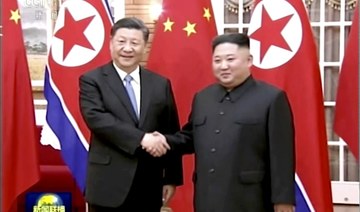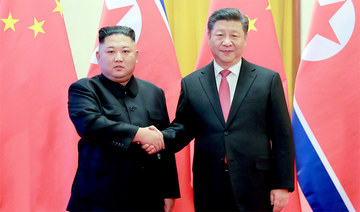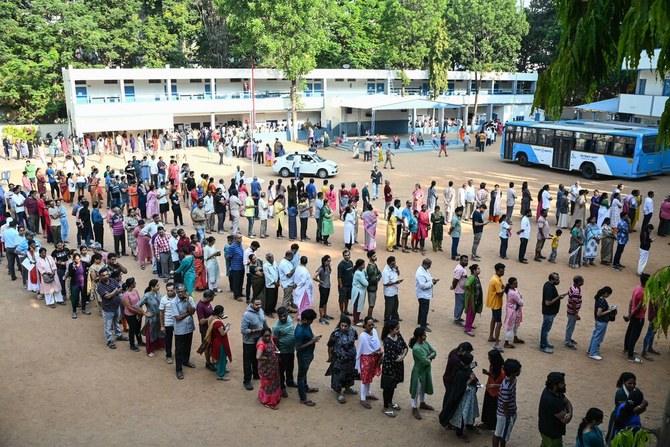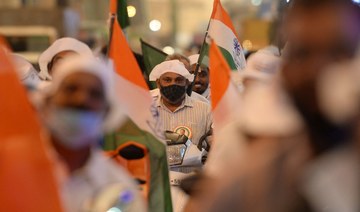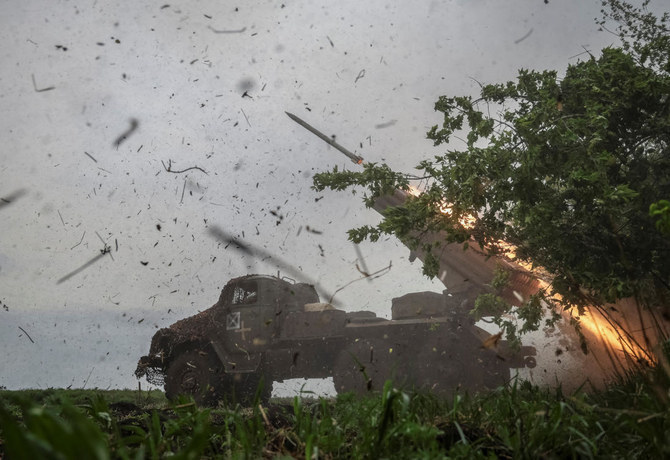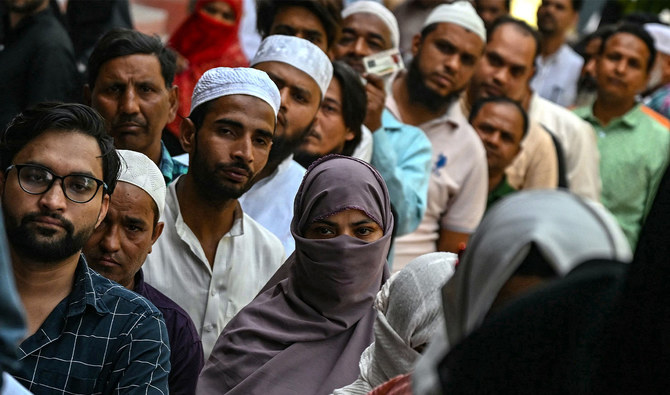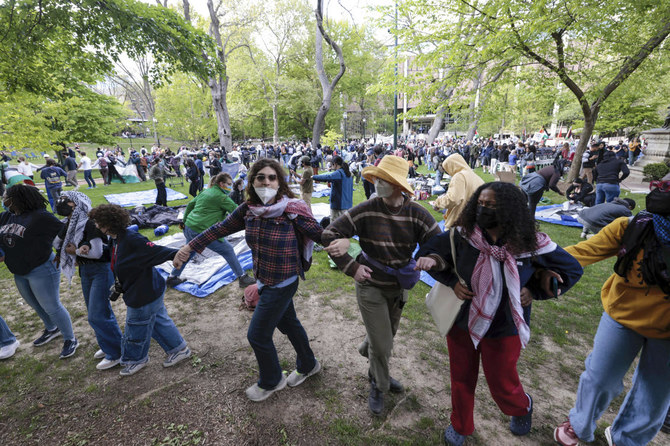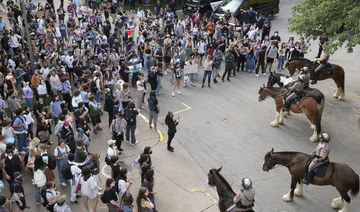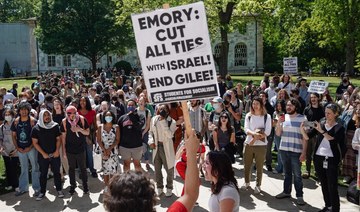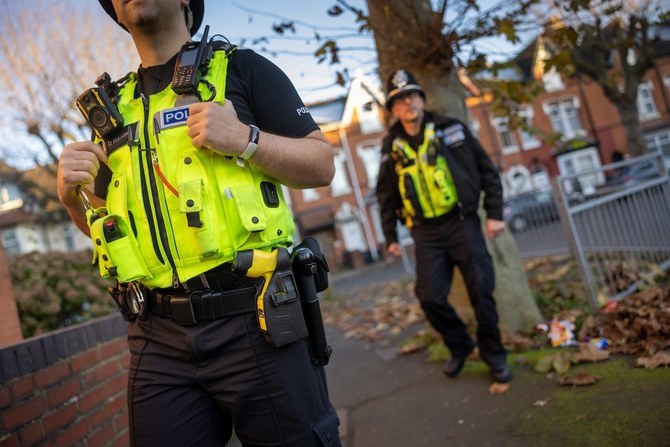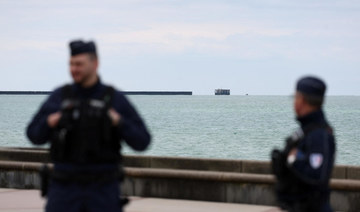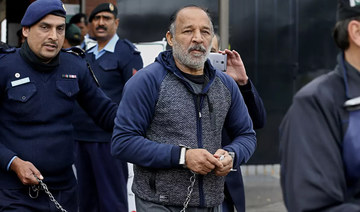SEOUL: The leaders of the US and North Korea have exchanged personal letters despite a year-long stalemate in efforts to rid the North of nuclear weapons, raising cautious hope of a third encounter on denuclearization.
According to the Korean Central News Agency, President Donald Trump sent his North Korean counterpart Kim Jong Un a letter on Sunday. Kim said “with satisfaction that the letter is of excellent content,” the agency reported.
Praising Trump’s “political judging faculty and extraordinary courage,” the communist ruler reportedly said he would seriously contemplate the interesting content, the agency said, without elaborating.
Trump’s is apparently in response to Kim’s letter sent earlier this month.
“I can’t show you the letter obviously, but it was a very personal, very warm, very nice letter,” Trump told reporters outside the White House on June 12.
The exchange of letters set the tone for continued diplomatic efforts between the two sides to resolve the stalemate over the North’s denuclearization, in spite of Pyongyang’s resumption of limited testing of short-range ballistic missiles.
“The exchange of letters between the leaders signals they would still prefer a ‘top-down’ approach toward their denuclearization deal,” Kim Dae-young, an analyst at the Korea Research Institute for National Strategy, told Arab News. “It seems Trump believes he has North Korea where he wants it. As long as North Korea isn’t testing long-range, nuclear-capable missiles, Trump would prioritize managing the North Korean risk.”
Shin Beom-cheol, a researcher at the Asan Institute for Policy Studies, expects working-level discussions between Washington and Pyongyang to resume soon.
“Hopes are growing nuclear disarmament negotiations would restart with the exchange of letters between Trump and Kim,” Shin said, referring to the planned visit by US Special Representative for North Korea Stephen Biegun to Seoul next week.
Biegun is scheduled to arrive on June 25 ahead of the planned summit between Trump and South Korean President Moon Jae-in on June 29.
“There is a possibility that during his stay Biegun will meet with North Korean officials at the truce village of Panmunjeom, or in the North,” said Cho Sung-ryul, a research consultant for the Institute for National Security Strategy. “Once the two sides meet, they will discuss issues of mutual interests, including the third Trump-Kim summit,”
Professor Kim Dong-yub of Kyungnam University in Seoul was cautious about the resumption of denuclearization talks.
“We don’t have to raise expectations too much about the Trump-Kim letter exchange,” said Kim. “Trump and Kim are just flattering each other without tangible progress.”
Trump and Kim met for the first time a year ago in Singapore to agree on the complete denuclearization of North Korea. But there has been little progress since then, with their second meeting in Hanoi last February collapsing over disagreements on sanctions.
The Trump administration demands North Korea scrap all of its nuclear weapons programs, including an enriched uranium program, in a verifiable manner. On the other hand, North Korea wants the US to ease sanctions step by step, corresponding to its phased denuclearization.
Since the fiasco at Hanoi, the North Korean dictator warned he would wait until the end of the year before taking a “new path.”
In defiance of UN resolutions banning the test-launch of ballistic missiles, Kim oversaw the test firings of short-range ballistic missiles toward the eastern waters of the Korean Peninsula last month. On the diplomatic front, Kim has been trying to pivot toward Russia and China through one-on-one meetings with Vladimir Putin and Xi Jin-ping in April and June respectively, so as to bypass sanctions.
The South welcomed the personal dialogue between the US and North Korea.
“The government assesses the exchange of personal letters between the leaders of the North and the US positively in terms of maintaining the momentum of their dialogue,” presidential spokeswoman Ko Min-jung said.
The North Korean issue is expected to be among the agenda items for the upcoming meeting between the leaders of the US and China. Trump and Xi are expected to hold a summit later this week on the sidelines of the G20 summit this week in Osaka, Japan.
After the G20 meeting, Trump is scheduled to fly to Seoul on June 29 for a meeting with President Moon.




